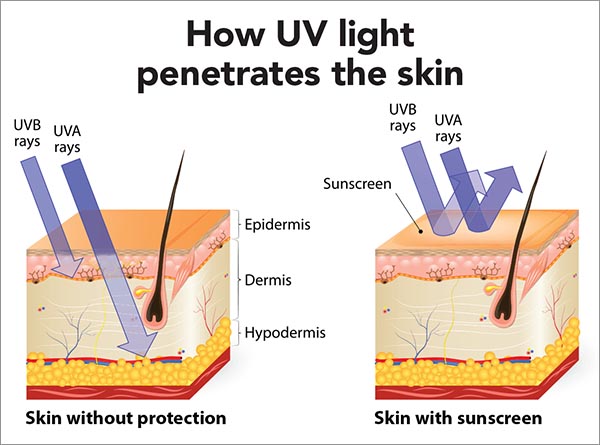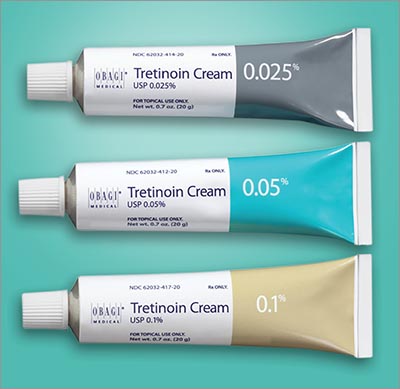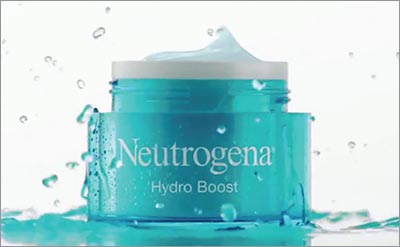Ironing out the wrinkles: The do's and don't bother's of anti-aging skincare

"Rejuvenate.” “Restore.” “Brighten.” Skincare companies use vague buzzwords to imply that their elixirs, potions, serums, and “cosmeceuticals” are the fountain of youth. But the evidence is often absent, weak, or funded by manufacturers.
What Causes Wrinkles
“The skin on the backside of an 80-year-old doesn’t look that different than the skin on the backside of a 20-year-old,” says Gary Fisher, a professor in the department of dermatology at the University of Michigan Medical School.
That’s because the main cause of wrinkled skin isn’t your age. It’s exposure to the sun.
“Ultraviolet radiation from the sun causes a wound-healing response in the skin, even though there’s no open wound,” notes Fisher.
“Part of the response is inflammation, which leads to collagen breakdown. Over time, the damage from those repeated UV insults accumulates to the point that the skin’s appearance changes.”1
And those changes are not just cosmetic.
“With photoaging, you get deep wrinkles and irregular pigmentation, plus lesions that may lead to skin cancer,” explains Erica Stevens, a dermatologist also at the University of Michigan Medical School.
“Photoaging is not nearly as prevalent in people with dark complexions,” she says. That’s because they have more melanin—a dark brown or black pigment in the skin, hair, and eyes—than people with lighter skin color.

Sun exposure creates more melanin—that’s what makes you tan. But don’t expect a tan to protect your skin if you’re fair-skinned.
“A tan is a sign of damage,” says Stevens. “It’s essentially your skin’s response to the UV damage by trying to protect itself.”
You can also thank your genes and years of squinting, smiling, and frowning for wrinkles. Smoking is to blame, too.
That said, here’s what you can do to help keep your skin looking young.
How to Avoid Sun Damage
The best way to prevent UV damage is to avoid the sun by seeking shade or wearing a wide-brimmed hat and protective clothing.
Tightly woven fabrics like denim, wool, and polyester provide more UV protection than looser-woven fabrics like linen and most cotton.
“You can also look for clothing with a UPF”— ultraviolet protection factor—“label, which tells you how much UV light is filtered out,” says Stevens. For example, an item that’s rated UPF 50 lets through just 1/50th of the sun’s UV light.
And UV-blocking sunglasses can protect your eyelids from skin cancer (and lower your risk of cataracts). Look for sunglasses labeled UV400 or for ones that block at least 99 percent of UV rays.
When shade or clothing won’t cut it, sunscreen is the next best thing. Some tips:
■ Look for SPF 30 or higher. “You want to aim for an SPF—or sun protection factor—of at least 30,” says Stevens. SPF 15 blocks 93 percent of UVB rays (which cause sunburns, skin cancer, and photodamage). SPF 30 blocks 97 percent.
“You can get small increases in protection as you go from SPF 30 to 50 to 70, but the effect is slight.”
■ Use a broad spectrum sunscreen. “We used to think that only UVB rays caused damage, but now we know that UVA also plays a role,” notes Stevens. UVA penetrates deeper into the skin and is a chief culprit in photoaging.2
Your best bet: a “broad spectrum” sunscreen, which protects against UVA and UVB rays. (Unfortunately, there’s no SPF rating system for UVA, so you don’t know how much protection you’re getting.)
■ Apply often. “If you’re in the sun, you should reapply sunscreen every two hours,” says Stevens.
And most of us don’t use nearly enough. “If most of your body is exposed to the sun, use about an ounce, or a shot glass worth, of sunscreen.” If you use less, you’ll get less protection. “Based on typical usage, someone using an SPF 70 may only get the equivalent of SPF 40.”
If you’ll be sweating or in water, opt for water resistant sunscreens, which last for 40 to 80 minutes.
Stevens also recommends sunscreen for people with dark skin. “You do have some natural protection thanks to melanin, but folks with darker skin can and do get skin cancer.”
■ Do it year round. UVB is more intense in the summer, at higher elevations, and in locations closer to the equator.
But UVA rays account for roughly 95 percent of UV radiation. And UVA intensity doesn’t vary much by season, weather, or location. Nor is UVA blocked by glass.2
“If your skin is exposed to daylight, I always advocate for wearing sunscreen, even on cloudy days and in the winter,” says Stevens.
Concerned that you won’t make enough vitamin D if you cover up and use sunscreen? You can always take a vitamin D supplement.
Retinoids
In 1995, the Food and Drug Administration approved creams and lotions with tretinoin to lessen wrinkles and dark spots on skin. Tretinoin is a retinoid, one of a class of compounds related to vitamin A (retinol).
“The anti-aging effects of retinoids involve stimulating collagen production,” says Fisher.
And collagen matters.
“Most of the skin’s mass is collagen, a structural protein that acts as a scaffold,” explains Marcel Nimni, an emeritus professor at the Keck School of Medicine at the University of Southern California.
Most people make less—and break down more—collagen as they get older.
Even worse, “photodamage creates an environment in the skin that causes the skin cells to make less collagen,” says Fisher. Retinoids override those signals.
“The additional collagen adds volume to the skin, making it smoother and reducing wrinkles. Photodamage also creates dark spots, and retinoids lighten them.”
But retinoids can cause dryness and irritation. If you want to try them, start by using a cream with a low concentration (like 0.025 percent tretinoin) just a few times a week, gradually increasing the frequency, says Stevens.
Retinoids also make the skin more sensitive to the sun. If you use a retinoid, apply it at night and wear a hat or use sunscreen during the day.
And don’t expect to look like you had a face lift. The results are subtle and take time.
“It often takes three to six months to start seeing the benefits,” notes Fisher.
Tretinoin, which requires a prescription, is available as a generic drug. And it now has competitors: Tazarotene also requires a prescription, but adapalene (which the FDA has approved only for treating acne) is sold over the counter as Differin.
“All of them are beneficial,” says Stevens. “Tazarotene causes more dryness and irritation, so I prescribe it less often than tretinoin. Adapalene is the least irritating and most readily available, since you don’t need a prescription, though it isn’t as potent as tretinoin.”
What about over-the-counter creams with retinol?
“Retinol is metabolized in our bodies to tretinoin, which activates the pathways that lead to the skin-based benefits,” explains Fisher. But you’d need far more retinol to have the same impact.3

“Tretinoin is about ten-fold more potent than retinol,” says Fisher.
The catch: over-the-counter creams don’t have to say how much retinol they contain. (They’re cosmetics, not drugs.)
“Some may have too little to be effective, and some may have high levels that can be irritating,” notes Fisher.
What about taking vitamin A (retinol) supplements? There’s no evidence that they help. And high doses can build up and eventually cause liver damage.
“Vitamin A acts on every cell in our bodies, so if you load up, you can run into trouble,” says Fisher.
As for supplements and ingredients in moisturizers, serums, lotions, and creams that claim to have anti-aging properties: “There is unfortunately very little solid science and lots of pseudoscience about products to slow or reverse skin aging,” says Barbara Gilchrest, a dermatologist and photoaging expert at Massachusetts General Hospital.
“Tried and true: sunscreens and tretinoin.”
References
1Arch. Dermatol. 138: 1462, 2002.
2Exp. Dermatol. 23 (Suppl. 1): 7, 2014.
3J. Cosmet. Dermatol. 14: 40, 2015.
MOISTURIZERS

“A lot of my older patients complain of dry, itchy skin,” says University of Michigan dermatologist Erica Stevens. That’s because skin loses its volume over time, so it gets thinner and drier.
Moisturizers relieve dryness by helping the skin retain water. “That decreases the risk of tearing the skin if you’re scratching because it’s dry,” explains Stevens. (Torn skin increases the risk of infection.)
“But moisturizers don’t smooth out wrinkles,” she notes. “They just get rid of dryness and flakiness, which can make the skin look nicer.”
Don’t count on most ingredients that are added to moisturizers to banish wrinkles, either:
■ Hyaluronic acid. “It’s a naturally occurring molecule that holds onto moisture inside the skin and plumps up the skin,” says the University of Southern California’s Marcel Nimni. “But it’s a huge molecule, so it doesn’t get through the skin.”
That means that creams and lotions with hyaluronic acid retain moisture on the skin’s surface, but they won’t have any long-lasting effect on the texture or smoothness of the skin.
■ Vitamin C. It’s necessary for building the collagen that gives skin its structure. Just don’t expect much from serums and moisturizers.
“Vitamin C is pretty unstable,” says Stevens, except at a low pH. So if the moisturizer isn’t acidic, the vitamin C is often inactive by the time it reaches your skin. Or it may be bound to a stabilizing compound that doesn’t permeate skin.1 (No studies have looked at taking vitamin C to reduce wrinkles, but it’s unlikely to help.)
■ Other ingredients. “There are so many cosmeceuticals added to moisturizers, and it’s almost impossible to know whether they do what companies claim or how much is actually in a product,” says Stevens.
“They’re not like drugs. They don’t undergo rigorous testing, and almost all of the research is industry driven. You’d be hard-pressed to find any hard science for most of them.”
Her bottom line? “Use anything you like that feels good on your skin. There’s no reason to pay $100 for a moisturizer when you can use something basic from CVS.”
References
1J. Cosmet. Dermatol. 11: 310, 2012.
COLLAGEN

“Our line of beauty-specific products support the skin’s moisture, improving the elasticity, tone and vibrance,” promises Vital Proteins, which sells collagen powder.
The rationale: since fine lines, wrinkles, and skin thinness are mostly due to losing collagen, why not just eat collagen?
“It’s like a story from the Dark Ages,” says the University of Southern California’s Marcel Nimni (who literally wrote the book on collagen). “If you want to be smart, eat brain. If you want courage, eat heart. If you want to be beautiful, eat collagen.”
But it’s not that simple.
“When we eat collagen, our gut breaks it down into amino acids, just like any other protein,” explains Nimni.
In other words, your body doesn’t shuttle intact collagen to your skin. Nor can you direct the amino acids from the collagen you eat to build more collagen in your skin.
What’s more, “there’s only one amino acid—hydroxyproline—that’s found in collagen that’s special,” says Nimni. That is, it’s found in only a few proteins, and it’s essential for giving collagen its strength.
“But we’ve known for 60 years that your body cannot use hydroxyproline from the diet to build collagen. The body has to make hydroxyproline on its own,” Nimni explains.
“The issue is not that the skin is deficient in collagen’s building materials,” says the University of Michigan’s Gary Fisher. “It’s that the machinery to build collagen doesn’t work as well as we get older.”
Nimni’s bottom line: “This idea of eating collagen to improve your skin’s appearance is the ultimate fallacy. People are wasting their money.”
Photos: PhotoSG/stock.adobe.com (top), Obagi Medical (tretinoin cream), Neutrogena (moisturizer), Vita Proteins (collagen).
Illustration: designua/stock.adobe.com.
Tags

